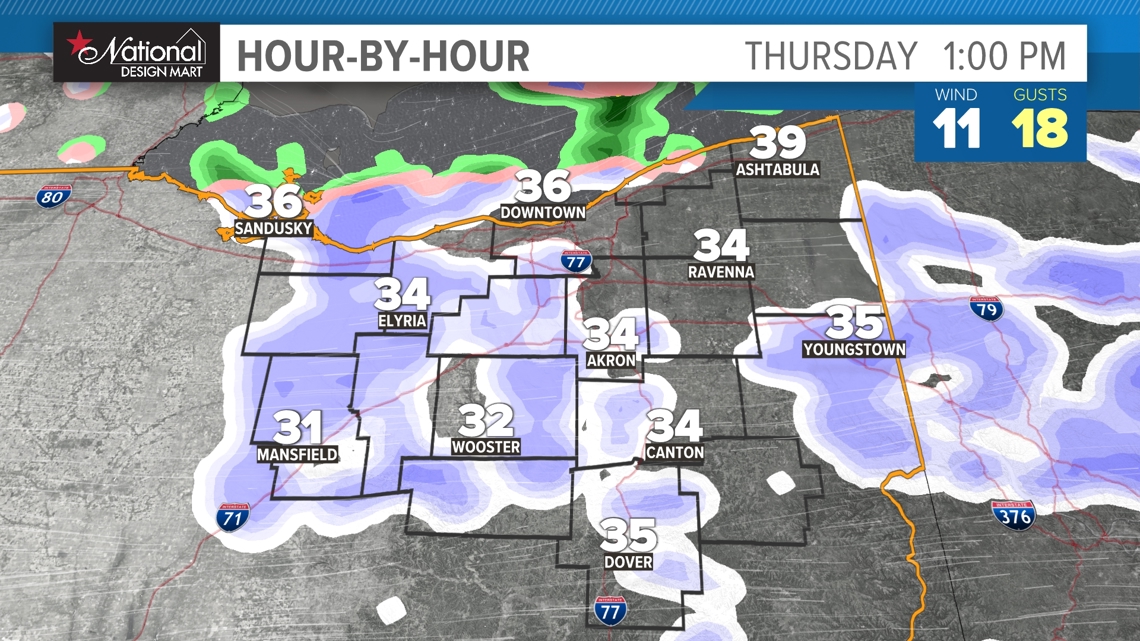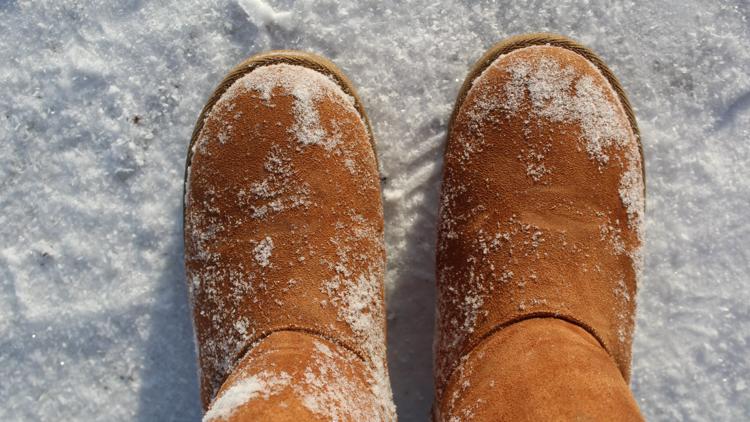CLEVELAND — You might think that snow can only fall when it's freezing outside, but it turns out snow can still happen even when temperatures are above 32 degrees Fahrenheit. Here's how this surprising weather phenomenon works, backed by some cool science!
Weather systems can create conditions for snow even in unusual temperatures. Meteorologists often monitor these temperature differences to predict snowfall.
Temperature is probably the most obvious place to start, but weather conditions aren't uniform from the ground up. In many cases, the air in the upper atmosphere (where clouds form) can be cold enough to support snow formation, while the temperature near the ground is above freezing. For instance, the upper atmosphere can be around 20 degrees while the surface is 35.


Up "there" where it is cold, snow forms in clouds when water vapor condenses and freezes into ice crystals. These crystals grow and clump together, eventually falling to the ground as snowflakes. As we've said, the air temperature at cloud level can be quite different from the temperature at the ground level. When the snowflakes fall, they can drag cold air down with them that allows the snow to reach the ground, where the temperatures are above freezing.
If it's a bit warmer, the snow that falls might be wetter and heavier. This is because the higher temperatures can cause the snowflakes to partially melt, leading to what we call "wet snow." On the other hand, if temperatures are lower, the snow will be drier and lighter.
Sometimes, when it's slightly above freezing, clouds can contain supercooled water droplets — water that remains liquid even below 32 degrees. When these droplets come into contact with ice crystals in the clouds, they freeze, helping to create more snowflakes that can fall to the ground. Sometimes conditions are right that these supercooled water droplets will clump onto snowflakes to create graupel — they look like Dippin' Dots when they hit the ground.
So the next time you see snow falling while it's warm outside, remember that it's all about the temperature differences between the upper atmosphere and the ground, along with the fascinating behavior of water. Nature has a way of surprising us, and while snow may seem magical, it's just science!



